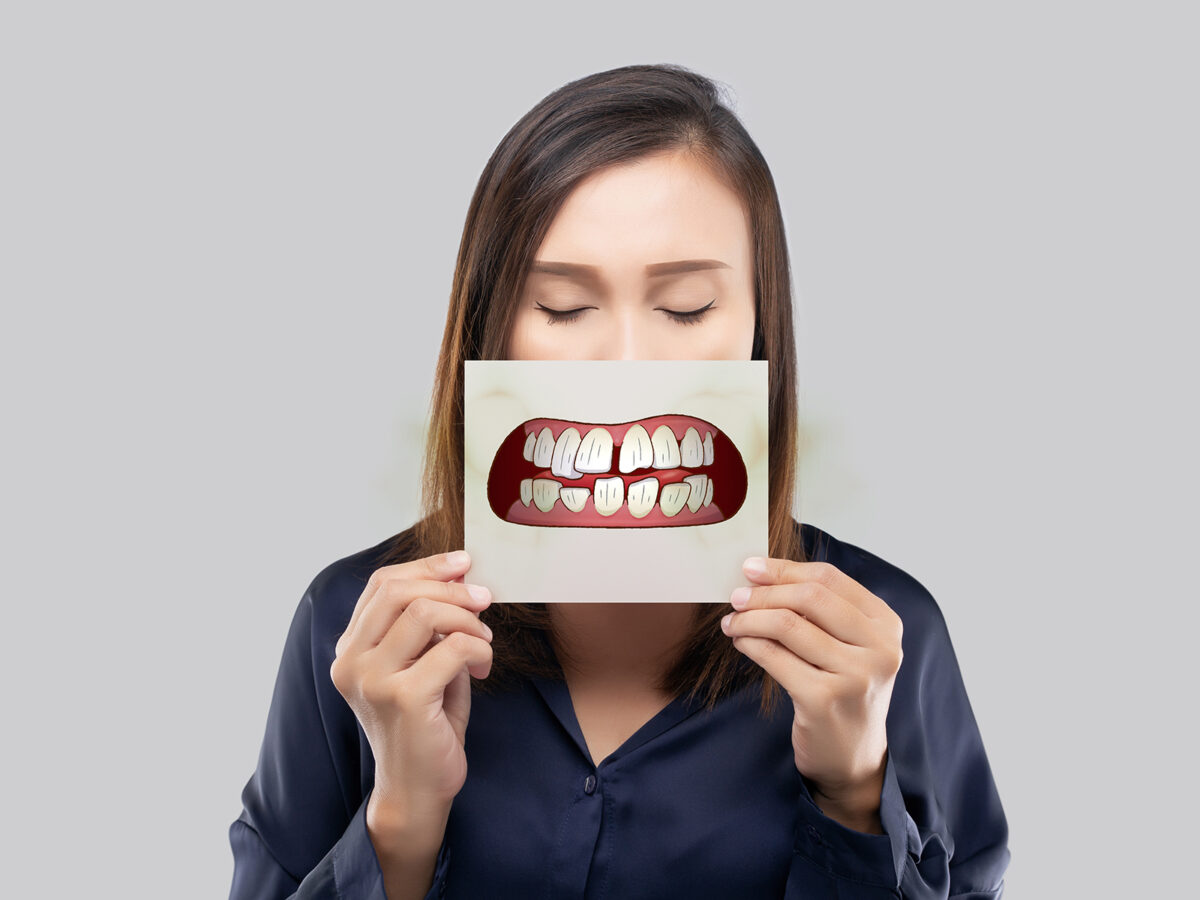Blog
Dental hygiene tips for healthy teeth & gums

Different Types of Teeth Alignment Problems
Your teeth are significant in overall appearance, and having well-aligned pearly whites boosts your confidence. On the other hand, if we are ashamed of our dental setup, it makes us self-conscious, lowers our self-esteem, and we are embarrassed to smile or engage in conversations with others.
Misalignment of teeth is known as malocclusion in clinical terms, and this condition can lead to many oral complications if left untreated. An ideal bite is when your upper dentition is a little forward with respect to your bottom teeth, and the valleys and peaks of both lower and upper molars meet perfectly.
But not all of us have that perfect setup. A study says that as much as seventy-five percent of the world’s population has some alignment issues. Apart from cosmetic or aesthetic issues, misaligned dentition also causes many dental problems leading to premature wear and tear, weakening of teeth, and several other issues.
As you go through this article, you will understand the various types of malocclusion and their impact on our oral health.
Types of Malocclusion
In the mid-80s, Dr. Edward Angle (also known as the father of modern orthodontics) first categorized dental misalignments into three main classes based on the position of the first upper molar:
- Class 1-Neutrocclusion- The upper teeth overlap the lower teeth in this malocclusion.
- Class 2-Distoclusion- When there is a discrepancy in jaw growth, it falls into this category of malocclusion.
- Class 3-Mesioclusion- When you have prominent lower front dentitions, you suffer from this misalignment category.
Almost all oral alignment issues fall under one of the classes of malocclusion.
Different Ways Your Teeth Can Be Misaligned
Malocclusions can be by birth or genetic, or they could also be caused by certain oral habits such as thumb sucking, tooth loss, prolonged bottle feeding, injuries, lack of oral care, etc. Some of the most common dental alignment issues are outlined below:
- Crowded teeth – When there is a lack of space in the oral cavity for teeth, you end up with this issue of overcrowding of teeth. Due to this, your dentitions grow to have crooked contours or could overlap with each other, which creates an overcrowded environment within the inside of your mouth. Your teeth are forced to press against each other in this situation, and it is difficult to brush or floss appropriately as there are many tricky nooks and corners in your dentures to clean around. This issue is mostly fixed with orthodontic braces or aligners like Invisalign.
- Excess Overjet – When the upper dentitions protrude past the lower teeth horizontally, it causes the extra overjet issue. You can have speech problems and trouble chewing and eating since your bite aligns well. It is also aesthetically unpleasant. This condition is primarily due to skeletal issues when the patient’s lower jaw has deficient growth. Another reason for this issue is a problem with the inclination of upper dentition. This problem can again be easily rectified with orthodontics.
- Deep overbite – We usually have a slight overlap between upper and lower dentures, which is normal. But when the upper jaw protrudes beyond normal and it bites down on the bottom teeth’ gums, it results in an overbite. This issue is mainly because the patient has a recessive chin that affects the shape of their jaw and face. Patients with this malocclusion tend to clench their jaws or grind their dentitions often, which could lead to chronic headaches and other discomforts. Genetic issues and thumb-sucking are the primary reasons, and orthodontic treatment can address this issue.
- Underbite – An underbite occurs when the lower teeth extend past the upper ones. If you have used a pacifier or sucked your thumb as a kid, you are likely to develop this condition. Genetics is also one of the reasons for this type of malocclusion. Apart from being an aesthetic issue, an underbite also poses chewing problems. In severe cases of underbite, patients might experience speech problems, tremendous pain, and more. Orthodontics like Invisalign and braces can help in fixing underbites.
- Crossbite – Crossbite looks similar to overbite or underbite but is a less common issue than either. In a crossbite, your upper pearly whites bite down on your lower ones. Your top and bottom plates are not aligned well, and your teeth crisscross when you eat. Crossbite is also called a negative overjet. Abnormal growth of adult teeth and a small mouth that cannot accommodate adult teeth adequately are some of the reasons for crossbites. Crossbites can significantly damage your dentitions as you bite down, resulting in chipped and cracked teeth or even bleeding and painful gums. In children, a palate expander is often used to correct a crossbite. The crossbite corrects itself in around nine percent of kids as they grow. Invisalign is also known to restore crossbites in adults.
- Diastema or gaps in pearly whites- Compared to crowded teeth, diastema occurs when your mouth is too large for the number of dentitions you have. Small gaps form between your teeth to fill the space, mainly between the front two upper or lower dentitions. The gaps make more food stuck between your pearly whites, which could result in more cavities, gum diseases, and tooth decay. Braces and Invisalign are two common solutions for diastema.
Misaligned teeth can make us feel awkward and cause various oral and speech difficulties. But the good news is that any malocclusion is treatable through orthodontic treatments like traditional braces, Invisalign clear aligners, or retainers. You can meet up with your dentist to find the best solution for the type of oral misalignment you have.


